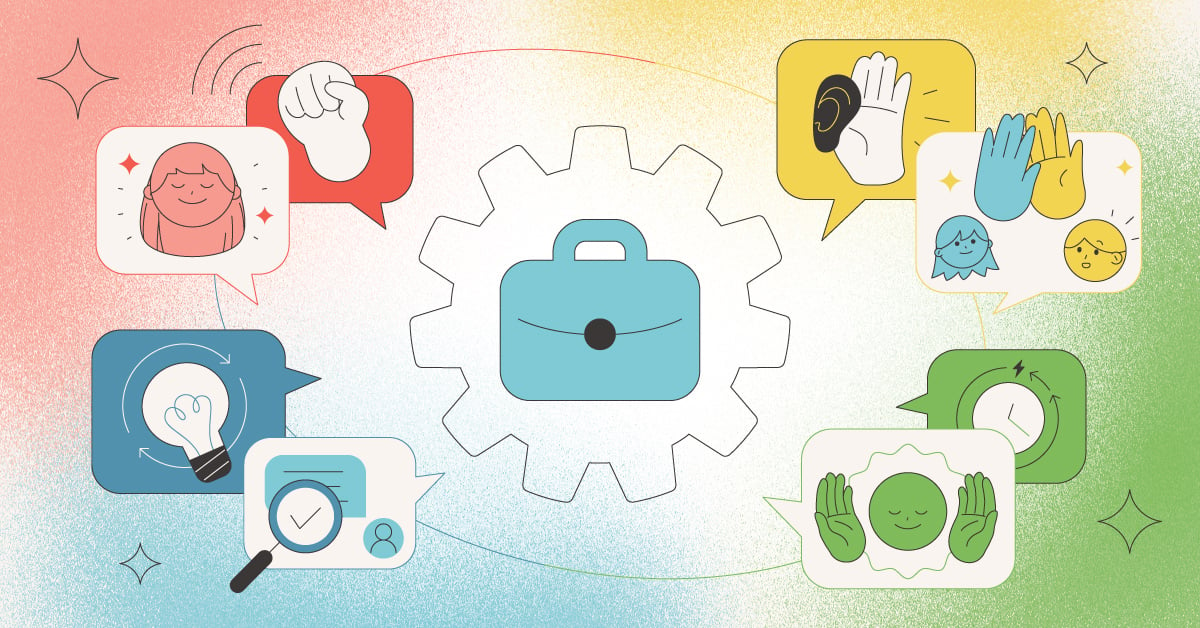
Much attention is paid toward hiring the right candidate, but that is only part of the equation. Once on board, selecting the right people for teams is just as important. While you want to consider the overall impact the person will have with the larger organizational team, the makeup of smaller work teams can be just as critical. Good team selection is critical for long-term results since teamwork is where the rubber meets the road.
For the larger organizational team, the bigger picture may be the main focus in terms of theories, strategies and even brainstorming. Conversely for smaller work teams, the work is the dissecting, organizing, testing and implementation of those theories, strategies and innovative ideas.
Creating a Solid Work Team
For a group of people (teams) to be able to work together, the right chemistry of personalities, skills, talents and attributes must come together the way an orchestra plays in harmony by delivering the right notes, at the right level, at the right time. This level of orchestration doesn’t just happen overnight. Neither an orchestra nor a team can operate effectively without understanding the importance each member contributes to the overall whole. Orchestra members recognize each performer’s musical talent, nuances and unique style and adapt accordingly.
The conductor understands exactly where each instrument fits into a performance and identifies the best talent to play the right instrument for each specific performance. A team leader operates in much the same fashion. No matter how solid the conductor or team leader may be, it certainly doesn’t mean there won’t be conflict that arises.
While some conflict is inevitable, putting together a team with members who possess the right attributes makes everything easier. The right team balance provides synergies to work together to overcome conflict, be productive and accomplish the tasks at hand. So how does a team leader know what the right mix is for a particular task?
Using DISC to Build the Perfect Team
There is a common belief that if you have a four-person team, you need to have a member of each behavior style on it. Behavior styles can be identified through the concept of DISC, the universal language of understanding observable behavioral styles.
Each of the letters in DISC represents an observable behavioral style. D is for Dominance. These are the more assertive behavioral styles. The I is for Influence. High-I styles are people-oriented, friendly and trusting. The S style is for those who are the “Steady Eddies” of the world. Some people may have difficulty “reading” their emotions. Finally, the C represents Compliance. These are the folks who like policies, procedures, rules and regulations. Having one of each behavioral style on a four-person team allows for a balance and more diverse idea pool.
For example, The D is usually a self-starter who embraces challenges, while being a forward-looking organizer who places a high value on time. The D will help drive the team forward and help complete the project on time. The I is an optimistic team player who helps motivate others. The I is also good at negotiating conflict.
The S is dependable and hard-working. The S will act as a sounding board to help ensure that all ideas get heard. Patient and persistent, the S will follow a project through to completion. Finally, The C brings objectivity and maintains high standards for a project. The high-C is task-oriented, covers all the bases, and ensures the effectiveness of a project. Diving deeper into the DISC assessment will provide an even greater understanding about how to use talent to its greatest advantage.
Finding the Balance Between the Project and the People
Of course, any successful working relationship must begin from a foundation of trust and respect. Trust and respect permeates all levels organization. Understanding and identifying each other’s differing behavioral styles helps people adjust their own behaviors for better communication. Better communication leads to more trust and respect between employees.
As you can discern from the above information, simply throwing a group of coworkers together on a project probably may not achieve great results on a work goal. Therefore, leaders must understand both the project and the people who will be working together to achieve success.
At the very least, maintain a database of the knowledge, skills and attributes your employees bring to the table. Collecting this data at time of hire from resumes, interviews and reference checks is a good place to start. Once on board, this data reveals itself during committee service, projects and evaluations. At best, use assessments and a report system that can pull all that information together automatically for you and allow you to adjust people’s roles as necessary to establish the best matches for building teams, completing projects and succession planning.
Conclusion
Having a series of efficient and productive teams is essential to your organization’s success. Each individual team plays a vital role in shaping the overall organization. However, there are processes, systems and tools available to help make team building painless, productive and profitable. These include evaluations, interviews, internal recommendations and using valuable and insightful assessments such as DISC. Once these are in place and being used on a regular basis, you can build a culture of good team selection for growth and profitability.




